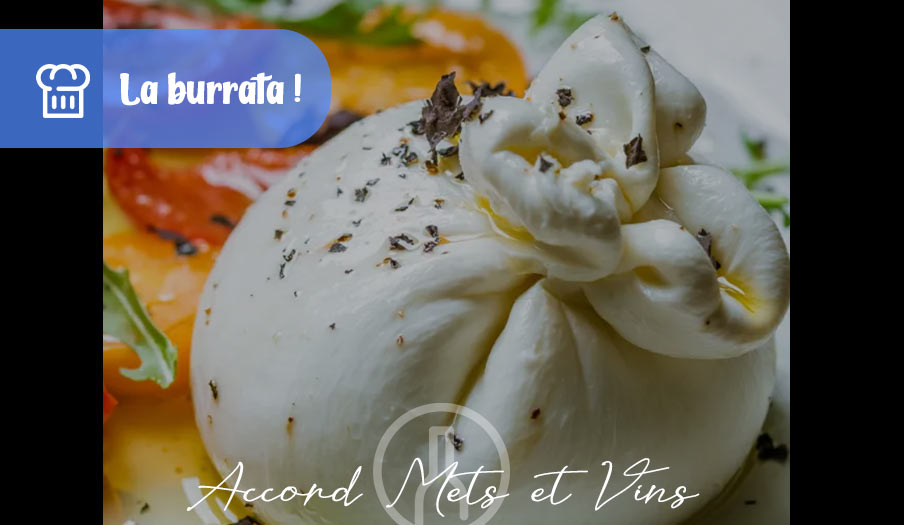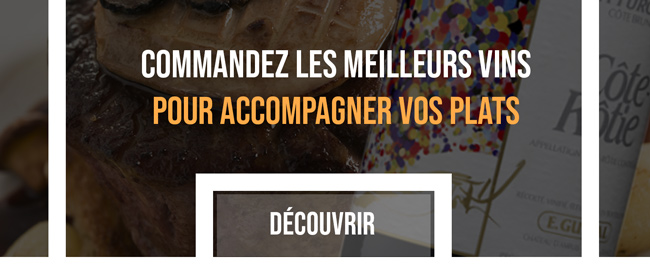? First of all, let's "enlighten your taste buds" by explaining the difference between burrata and mozzarella. So, yes, both products do originate in Italy, as we all agree. Their differences lie in several points.
? To begin with, the origin of the milk. For "standard" mozzarella, the milk can come from either cow or buffalo. For mozzarella di bufala, the milk must come from buffalo. For burrata, there's no doubt that the milk must come from the cow. Next, the manufacturing process. To put it simply, burrata is a derivative of mozzarella, the difference being its creamy center. In the case of burrata, cream is added to the center to add creaminess and flavor. It's best eaten quickly.
How to serve burrata?
Its creamy texture and earthy, fresh taste call for opulent wines.
If we start with a burrata served simply with olive oil and bread, it's advisable to go for a supple, aromatic wine with a round texture, so as not to create too great a contrast in matter.
For a white wine, opt for a Chardonnay with its white fruit aromas, or a Chenin-based Loire white, which will give apricot and white fruit aromas.
If you prefer a red wine, you'll need a very light, supple wine. Pinot Noir or Gamay are ideal.
If burrata is used as an antipasti, often accompanied by candied peppers, Parma ham, etc., it will need a kick of pep. This time, Sauvignon Blanc can be used to enhance the taste of the starter, with its citrus notes. For a more Italian touch, some wines, generally from the South, use Rolle, also known as Vermentino in Italy. This grape gives exotic fruit and floral notes with a fresh mouthfeel. In reds, it's important to avoid tannins, but to add character. Wines made from Syrah or Grenache are perfect for spicing up cheese.
To sum up, here are some interesting AOCs to taste:
-
For a simple burrata :
Chardonnay-based: Bourgogne Chardonnay - Saint-Romain - Pouilly-fuissé
based on Chenin : Montlouis-sur-Loire, Chinon whiteJasnière
in red: Pinot Noir de Burgundy, Hautes-Côtes de Nuits, Beaujolais-villages
- For a burrata antipasti :
Sauvignon-based : Sancerre white, Pouilly Fumé
in red : Crozes Hermitage - Saint-Joseph – Languedoc
- Triple Zéro - La Taille aux Loups - Jacky Blot - €24.00
- Montlouis sur Loire Cuvée Remus 2024 - La Taille aux Loups - €24.00
- Montlouis sur Loire Clos Michet 2024 - La Taille aux Loups - €26.00
- Clos de Mosny 2024 Montlouis sur Loire - La Taille aux Loups - € 29.00
- Chinon Rouge 2023 Chien Chien - Domaine de La Noblaie - €16.00











